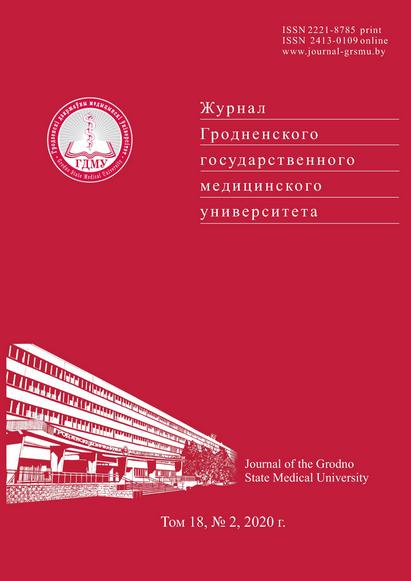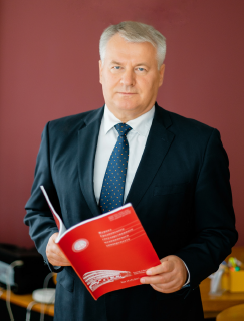АЛГОРИТМЫ МЕДИКАМЕНТОЗНОЙ ТЕРАПИИ КОРОНАВИРУСНОЙ ИНФЕКЦИИ (COVID-19) У ПАЦИЕНТОВ С УДЛИНЕНИЕМ ИНТЕРВАЛА QT

Аннотация
С момента выявления первых случаев коронавирусной инфекции (COVID-19) не прекращается поиск эффективных препаратов для ее лечения. Наиболее перспективными в терапии COVID-19 стали противомалярийные, антиретровирусные препараты и антибиотики группы макролидов. Общий побочный эффект для данных групп препаратов – их способность к удлинению интервала QT и индуцированию пароксизмов полиморфной желудочковой тахикардии torsades de pointes, в особенности у пациентов с генетическими дефектами реполяризации миокарда желудочков. В настоящей статье представлены алгоритмы медикаментозной терапии пациентов с COVID-19 в зависимости от риска возникновения жизнеугрожающих желудочковых аритмий на фоне удлиненного интервалa QT, разработанные при поддержке Евразийской Аритмологической Ассоциации (EURA-3).
Литература
Yao X, Ye F, Zhang M, et al. In Vitro Antiviral Activity and Projection of Optimized Dosing Design of Hydroxychloroquine for the Treatment of Severe Acute Respiratory Syndrome Coronavirus 2 (SARS-CoV-2) [published online ahead of print, 2020 Mar 9]. Clin Infect Dis. 2020;ciaa237. http://doi.org/10.1093/cid/ciaa237.
Colson P, Rolain JM, Lagier JC, Brouqui P, Raoult D. Chloroquine and hydroxychloroquine as available weapons to fight COVID-19 [published online ahead of print, 2020 Mar 4]. Int J Antimicrob Agents. 2020;105932. http://doi.org/10.1016/j.ijantimicag.2020.105932.
Gao J, Tian Z, Yang X. Breakthrough: Chloroquine phosphate has shown apparent efficacy in treatment of COVID-19 associated pneumonia in clinical studies. Biosci Trends. 2020;14(1):72–73. http://doi.org/10.5582/bst.2020.01047.
Guan WJ, Ni ZY, Hu Y, et al. Clinical Characteristics of Coronavirus Disease 2019 in China. [published online ahead of print, 2020 Feb 28] N Engl J Med. 2020; https://doi.org/10.1056/NEJMoa2002032.
Wu CI, Postema PG, Arbelo E, et al. SARS-CoV-2, COVID-19 and inherited arrhythmia syndromes [published online ahead of print, 2020 Mar 31]. Heart Rhythm. 2020;S1547-5271(20)30285-X. http://doi.org/10.1016/j.hrthm.2020.03.024.
Lazzerini PE, Boutjdir M, Capecchi PL. COVID-19, Arrhythmic Risk and Inflammation: Mind the Gap! [published online ahead of print, 2020 Apr 14] Circulation. 2020; http://doi.org/10.1161/CIRCULATIONAHA.120.047293.
Wang M, Cao R, Zhang L, et al. Remdesivir and chloroquine effectively inhibit the recently emerged novel coronavirus (2019-nCoV) in vitro. Cell Res. 2020;30(3):269–271. http://doi.org/10.1038/s41422-020-0282-0.
Gautret P, Lagier J-C, Parola P, Hoang VT, Meddeb L, et al. Hydroxychloroquine and azithromycin as a treatment of COVID-19: results of an open-label non-randomized clinical trial [published online ahead of print, 2020 Mar 20] Int J Antimicrob Agents. 2020; http://doi.org/10.1016/j.ijantimicag.2020.105949.
СredibleMeds [Electronic resource]. – Mode of access: https://crediblemeds.org. – Date of access: 14.04.2020.
Thomsen M, Beekman J, Attevelt N, Takahara A, Sugiyama A, Chiba K, et al. No proarrhythmic properties of the antibiotics moxifloxacin or azithromycin in anaesthetized dogs with chronic-AV block. Br J Pharmacol. 2006;149:1039–48.
Choi Y, Lim H-S, Chung D, Choi J, Yoon D. Risk Evaluation of Azithromycin-Induced QT Prolongation in Real-World Practice. BioMed Research International. 2018;2018:1–8. http://doi.org/10.1155/2018/1574806.
Fossa AA, Wisialowski T, Duncan JN, Deng S, Dunne M. Azithromycin/chloroquine combination does not increase cardiac instability despite an increase in monophasic action potential duration in the anesthetized guinea pig. Am J Trop Med Hyg. 2007;77(5):929–38.
Ford N, Vitoria M, Rangaraj A, et al. Systematic review of the efficacy and safety of antiretroviral drugs against SARS, MERS, or COVID-19: initial assessment. Journal of the International AIDS Society. 2020;23(4):e25489. http://doi.org/10.1002/jia2.25489.
Cao B, Wang Y, Wen D, Liu W, Wang J, Fan G, et al. A Trial of Lopinavir–Ritonavir in Adults Hospitalized with Severe Covid-19. [published online ahead of print, 2020 Mar 18] N Engl J Med. 2020; http://doi.org/10.1056/NEJMoa2001282.
Kirchhof P, Franz MR, Bardai A, Wilde AM. Giant T–U Waves Precede Torsades de Pointes in Long QT Syndrome A Systematic Electrocardiographic Analysis in Patients With Acquired and Congenital QT Prolongation. J Am Coll Cardiol. 2009;54(2):143–9. http://doi.org/10.1016/j.jacc.2009.03.043.
Kolocej LV, Snezhickij VA. Sindrom udlinennogo intervala QT. Chast’ 2 [Long QT interval syndrome. Part 2]. Zhurnal Grodnenskogo gosudarstvennogo medicinskogo universiteta [Journal of the Grodno State Medical University]. 2018;16(5):533–41. (Russian) http://doi.org/10.25298/2221-8785-2018-16-5-533-541.
Rautaharju PM, Surawicz B, Gettes LS, Bailey JJ, Childers R, et al. AHA/ACCF/HRS Recommendations for the Standardization and Interpretation of the Electrocardiogram Part IV: The ST Segment, T and U Waves, and the QT Interval A Scientific Statement From the American Heart Association Electrocardiography and Arrhythmias Committee, Council on Clinical Cardiology; the American College of Cardiology Foundation; and the Heart Rhythm Society Endorsed by the International Society for Computerized Electrocardiology. J Am Coll Cardiol. 2009;53(11):982-91. http://doi.org/10.1016/j.jacc.2008.12.014.
Kolocej LV, Snezhickij VA. Metodologicheskie podhody k izmereniju i ocenke dlitel’nosti intervala QT standartnoj jelektrokardiogrammy [Methodological approaches to measuring and estimating the duration of QT interval of a standard electrocardiogram]. Zhurnal Grodnenskogo gosudarstvennogo medicinskogo universiteta [Journal of the Grodno State Medical University]. 2019;17(1):99–105. (Russian) http://doi.org/10.25298/2221-8785-2019-17-1-99-105.
Giudicessi JR, Noseworthy PA, Friedman PA, Ackerman MJ. Urgent Guidance for Navigating and Circumventing the QTc-Prolonging and Torsadogenic Potential of Possible Pharmacotherapies for Coronavirus Disease 19 (COVID-19) [published online ahead of print, 2020 Apr 7]. Mayo Clin Proc. 2020;http://doi.org/10.1016/j.mayocp.2020.03.024.
Charbit B, Alvarez JC, Dasque E, Abe E, Démolis JL, Funck-Brentano C. Droperidol and ondansetron-induced QT interval prolongation: a clinical drug interaction study. Anesthesiology. 2008;109:206–212.
Hreiche R, Plante I, Drolet B, Morrissette P, Turgeon J. Lengthening of cardiac repolarization in isolated guinea pig hearts by sequential or concomitant administration of two IKr blockers. J Pharm Sci. 2011;100:2469–2481.
Meid AD, Bighelli I, Mächler S, et al. Combinations of QTc-prolonging drugs: towards disentangling pharmacokinetic and pharmacodynamic effects in their potentially additive nature. Ther Adv Psychopharmacol. 2017;7(12):251–264. http://doi.org/10.1177/2045125317721662.
Tisdale JE, Jaynes HA, Kingery JR, et al. Development and validation of a risk score to predict QT interval prolongation in hospitalized patients. Circ Cardiovasc Qual Outcomes. 2013;6(4):479–487. http://doi.org/10.1161/CIRCOUTCOMES.113.000152.






























